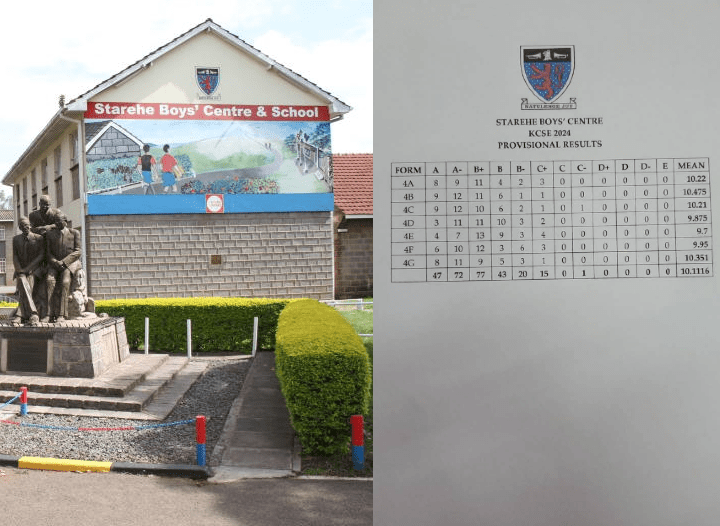Yesterday, on 9 January, the Ministry of Education released the Kenya Certificate of Secondary Education (KCSE) examination results for the 2021 cohort, who are students that entered Form One after the coronavirus pandemic and completed in December 2024.
For this KCSE class of 2024, Education Cabinet Secretary Julius Migos, during the results announcement event held at Mitihani House, Nairobi, revealed that 246,391 students out of the 965,512 candidates who sat for the exams qualified for direct entry to universities after scoring a mean grade of C+ and above.
Consistent with national trends, the 2024 KCSE pass rate, while remaining relatively flat at the top, saw a slight increase at the lower scale — from 44.4% to 49.4% for C- students — with 50% on average for those who scored D+ and below.
“A total of 46,889 candidates attained C- (minus) and above, representing 49.41%, while those with D+ (plus) and above numbered 605,774, representing 62.76%,” CS Ogamba said.
The situation is markedly different at Starehe Boys’ Centre, though. While most schools grapple with poor results and vague plans to create a roadmap for learning-centred education that best meets the needs of every student, alongside elusive facility upgrades to improve outcomes next time, the school is sending almost 100% of its students to university.
In 2024, 275 students sat KCSE at Starehe Boys’, and 274 of them qualified to join universities after scoring C+ and above. One student scored a C+, while another scored a C-. That marks a record 99.6% direct-to-campus rate! I have never known a school like this. My own school, Chavakali High School, is now at the same level as Chandumba. These days, I don’t even see them mentioned in the newspapers. Thanks to “Bukhol,” I was even expelled. Let’s not focus on small schools.
Starehe’s Obure Ian Nyangau emerged as the best student and appeared in the news after achieving a mean grade of A (Plain). He was the face of the school’s success, leading the 47 students who scored straight As in the boys-only school in Nairobi. He likely came from either Form 4B or Form 4C, which had the highest number of A grades at nine, followed by Form 4G, which had eight.
The number of A minuses was 72, B+ was 77, 43 students had B, 20 had B- and the remainder scored a mean grade of C+, adding to bring the total mean grade of the class of 2024 to 10.11, up from the other year’s 9.5.
But what can we expect, really? Starehe Boys’ Centre is an academic giant in Kenya, consistently producing top scholars nationally and internationally. The institution, founded in 1959 by Dr Geoffrey William Griffin, a former British military officer, alongside Geoffrey Gatama Geturo and Joseph Kibiru Gikubu, ranks among the country’s top-performing schools.
The school, managed by a charity organisation known as Starehe UK, admits students based on their Kenya Certificate of Primary Education (KCPE) exam results, with preference given to those from underprivileged backgrounds who demonstrate academic potential.
“Starehe Boys’ Centre provides a safe, secure home and high-quality education to over 1,100 boys, 70% of whom come from low-income families or are orphaned,” states Starehe UK.
The name Starehe is a Swahili word meaning “tranquility,” “peace,” or “comfort,” signifying a haven where orphaned boys find solace and opportunity.
> Best Students in KCSE 2024 and Their Schools













Great
It has been so long. But now we are back… ‘Giants of Africa’
Hard work pays
Bukhol-Buccal .
Unamjua?
The giants are now awake …nice article
Keep up starehe
Great piece there.
It’s been a while since we read such an encouraging story about SBC.
The last two directors of the institution have played a significant role in restoring the lost glory, especially after the demise of the founding directors.
Kudos to the boys and staff.
A proud alumnus
Very poor English.
Why’s a hard working donkey dies poor despite its commitment and hard work 😅
Perfectos , I think they could be the one being rewarded the Boeing from JKIA , BUT HERE’S IS KENYA